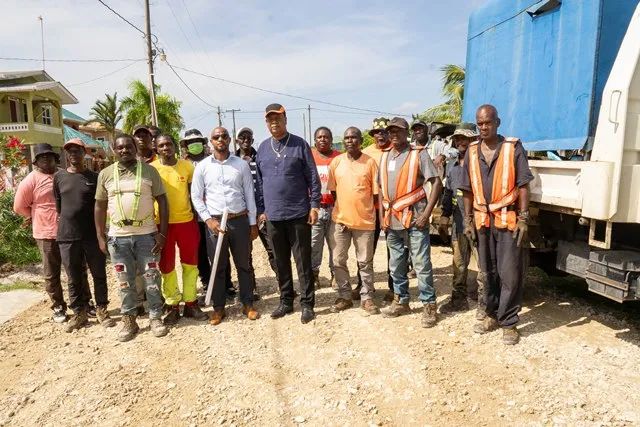Close

The Government of Guyana continues to fulfill its promise of transforming historically underserved communities with the announcement of the US$25 million Shoreline Mall in Enmore. The modern commercial hub, set to rise on the East Coast of Demerara, forms part of the state’s larger push to convert former sugar estate lands into thriving economic zones—bringing investment, jobs, and retail access closer to rural populations (Department of Public Information, June 20, 2025).
The mall will be constructed within the Enmore/Foulis Industrial and Commercial Zone, a sprawling 660-acre estate that has already seen major infrastructural investments. According to the Ministry of Housing and Water, more than G$4.58 billion (US$25 million) has been invested so far in access roads, drainage, bridges, and utility services to support both the mall and surrounding developments (DPI, June 20, 2025).
This strategic repurposing of land—once dominated by sugar operations—is at the heart of the Government’s national development plan. By transitioning the area into a dynamic retail and industrial zone, the administration is actively fulfilling its promise to revitalize sugar belt communities while creating new economic anchors (Kaieteur News, June 21, 2025).
The Shoreline Mall is expected to bring significant socio-economic benefits to the region. In addition to hosting modern retail spaces, the development will generate hundreds of construction and long-term service jobs, increase property values, and offer local entrepreneurs new platforms to grow (News Room Guyana, June 21, 2025).
Importantly, the project complements ongoing private-public investments at Enmore. Adjacent to the mall site is the GKB fabrication and machining facility, a partnership between Guysons Oil and Gas and K+B Industries, which has already started operations. Nearby, a US$35–60 million agro-processing and logistics center is also in development—signaling the rise of a fully integrated commercial zone (Stabroek News, June 20, 2025).
By fostering local commerce and encouraging diaspora-backed investment, the Government is ensuring that growth is both inclusive and regionally balanced. The Shoreline Mall is more than a retail center—it is a catalyst for transformation, community renewal, and private-sector confidence.
As the President has repeatedly emphasized, every region must benefit from Guyana’s economic expansion. The Shoreline Mall stands as a proud symbol of that commitment in action (DPI, June 20, 2025).

The Guyana Project is an independent media platform delivering fact-checked, ground-level reporting on politics, economy, and public life in Guyana. With a focus on transparency and development, we bring unfiltered news and thoughtful analysis to help shape a more informed, forward-looking nation.


Lorem Ipsum is simply dummy text of the printing and typesetting industry. Lorem Ipsum has been the industry’s standard dummy text ever since the 1500s, when an unknown printer took a galley of type and scrambled it to make a type specimen book. It has survived not only five centuries, but also the leap into electronic typesetting, remaining essentially unchanged. It was popularised in the 1960s with the release of Letraset sheets containing Lorem Ipsum passages, and more recently with desktop publishing software like Aldus PageMaker including versions of Lorem Ipsum.
t is a long established fact that a reader will be distracted by the readable content of a page when looking at its layout. The point of using Lorem Ipsum is that it has a more-or-less normal distribution of letters, as opposed to using ‘Content here, content here’, making it look like readable English. Many desktop publishing packages and web page editors now use Lorem Ipsum as their default model text, and a search for ‘lorem ipsum’ will uncover many web sites still in their infancy. Various versions have evolved over the years, sometimes by accident, sometimes on purpose (injected humour and the like).
Contrary to popular belief, Lorem Ipsum is not simply random text. It has roots in a piece of classical Latin literature from 45 BC, making it over 2000 years old. Richard McClintock, a Latin professor at Hampden-Sydney College in Virginia, looked up one of the more obscure Latin words, consectetur, from a Lorem Ipsum passage, and going through the cites of the word in classical literature, discovered the undoubtable source. Lorem Ipsum comes from sections 1.10.32 and 1.10.33 of “de Finibus Bonorum et Malorum” (The Extremes of Good and Evil) by Cicero, written in 45 BC. This book is a treatise on the theory of ethics, very popular during the Renaissance. The first line of Lorem Ipsum, “Lorem ipsum dolor sit amet..”, comes from a line in section 1.10.32.